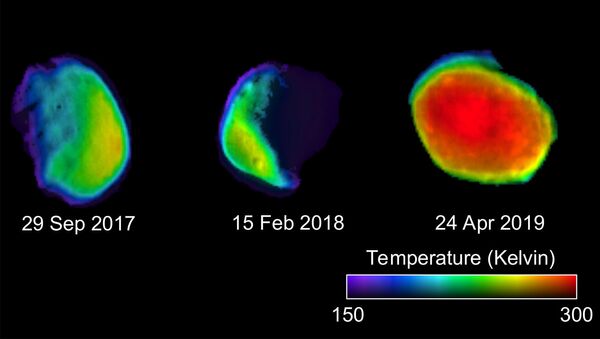The National Aeronautics and Space Administration revealed photos of the Martian moon Phobos during its full phase, which look like multi-coloured candies. It is the first photo of this kind made by NASA's Mars Odyssey orbiter, which caught the moon’s temperature range with a special infrared heat-vision camera. Each colour of its rainbow-like palette represents a certain temperature. This is expected to shed light on the materials that the larger of Mars' two moons consists of.
The orbiter has been studying the Martian moon since September of 2017, although Odyssey, orbiting the red planet since 2001, is considered to be NASA's longest-lived Mars mission. Its camera, the Thermal Emission Imaging System (THEMIS), can catch changes in Mars' surface temperature, depending on its textures and minerals. Odyssey project scientist at NASA's Jet Propulsion Laboratory in Pasadena Jeffrey Plaut stated that this new image is “a kind of temperature bullseye — warmest in the middle and gradually cooler moving out." According to him, the orbiter does observations from different angles or times of the day, helping to draw a full picture.
"With the half-moon views, we could see how rough or smooth the surface is and how it's layered. Now we're gathering data on what minerals are in it, including metals," THEMIS co-investigator Joshua Bandfield said, as cited by NASA.
READ MORE: NASA’s Curiosity Rover Captures Two Solar Eclipses on Mars (VIDEO)
Two such metals are iron and nickel. Data about its abundance could give researchers a lead about Phobos’s past and guess whether it is a captured asteroid or Mars fragments, sent into space by a blast a long time ago. However, Bandfield noted that the recent observations do not promise a breakthrough on the Martian moon’s origins but could give some data for future missions set to land there.
"By studying the surface features, we're learning where the rockiest spots on Phobos are and where the fine, fluffy dust is. Identifying landing hazards and understanding the space environment could help future missions to land on the surface," Bandfield said.




